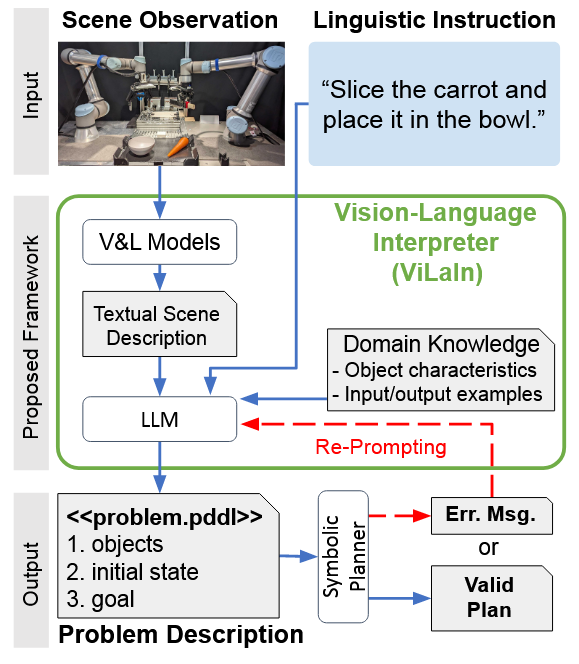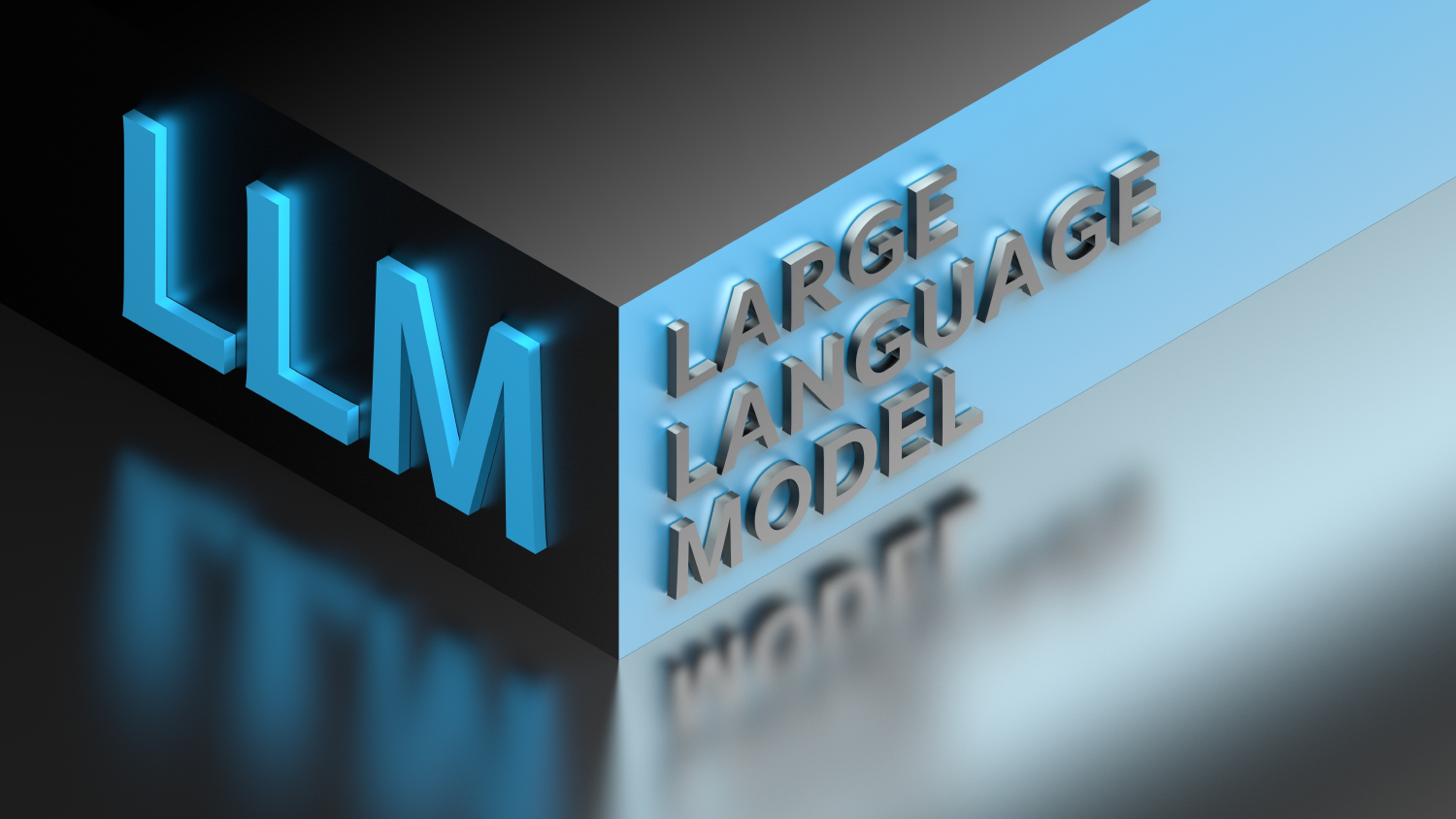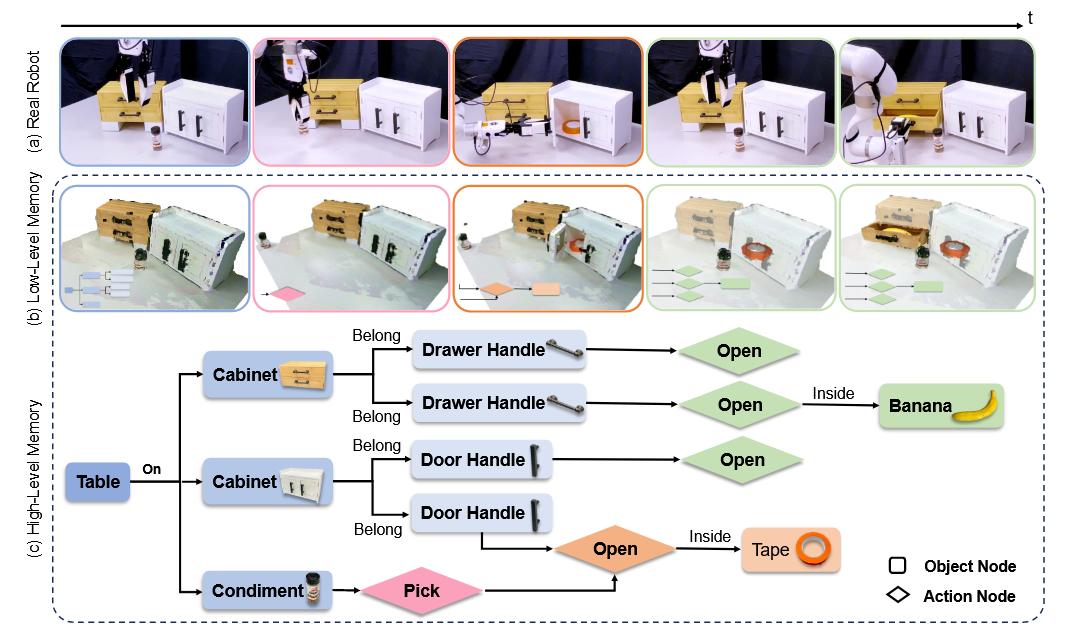
Official repo:
https://github.com/liuhengyue/fcsgg
Our repo:
https://github.com/PSGBOT/KAF-Generation
My venv: fcsgg
Installation
Environment Preparation
1 | git clone git@github.com:liuhengyue/fcsgg.git |
Downloads
Datasets:
1 | cd ~/Reconst |
Download the scene graphs and extract them to datasets/vg/VG-SGG-with-attri.h5.
Issues
1
1 | AttributeError: module 'PIL.Image' has no attribute 'LINEAR'. Did you mean: 'BILINEAR'? |
LINEAR-> BILINEAR: commit
2
在尝试训练的过程中报错:
1 | File "/home/cyl/Reconst/fcsgg/fcsgg/data/detection_utils.py", line 432, in generate_score_map |
modify detection_utils.py: commit
Training
首先更改训练的配置文件./config/quick_schedules/Quick-FCSGG-HRNet-W32.yaml, (原文件使用预训练的参数)
1 | MODEL: |
更改为train from scratch
1 | MODEL: |
再运行:
1 | python tools/train_net.py --num-gpus 1 --config-file configs/quick_schedules/Quick-FCSGG-HRNet-W32.yaml |
成功训练✌
1 | ... |
Explanation
See [[FCSGG Repo Explanation]]
(Mindmap) Part-level Scene Understanding for Robots
概念梳理
Scene Graph
A scene graph is a structural representation, which can capture detailed semantics by explicitly Modeling:
- objects (‘‘man’’, ‘‘fire hydrant’’, ‘‘shorts’’)
- attributes of objects (‘‘fire hydrant is yellow’’)
- relations between paired objects (‘‘man jumping over fire hydrant’’)
A scene graph is a set of visual relationship triplets in the form of <subject, relation, object> or <object, is, attribute>
Scene graphs should serve as an **objective semantic representation** of the state of the scenetzc转发的小红书推荐了这本书,推荐语:
做过很多爱,爱过很多人,被很多人爱过,才能写出这样的小书。
书很短,大概一给小时不到就能读完。但其实我读了一个半小时,主要是因为群友们在批判马提尼女士在恋爱中的🐢🐢行为,比较刺激所以时不时开小差看消息(对不起我紫菜)。
看完之后,无论是对书中的主人公还是马提尼女士,我都觉得她们在浪漫关系中能有此激情我真的很羡慕,我不希望她的这种激情被“利益分析”,“思考对方爱不爱自己”,过分影响。有的时候,浪漫关系,激情本身的存在,就是目的而不是手段。浪漫和激情不存在对错,只要自己能够承受,没有超过自己的度,那就没必要被批判。在我听来,分析对象是否爱自己(甚至是通过给自己花了多少钱的方式。。?),自己的爱是否值得,只不过是为了遮掩自己激情褪去的不堪。
于是晚上给马提尼分享了《简单的激情》。
爱欲就像海潮,涌起消退,重要的或许不是人,而是那种情愫,爱在某种程度上会物化别人,所以才需要提出“爱具体的人”,但是具体的人又岂是这么好爱的?情欲说到底还是一件自己的浪漫事。
前言
三周年的post更多就是一种形式了,看了二周年的post, 感觉已经把我本人对于博客网的情感表达得较为详尽了,一年过去我并没有对此生发更多的感情了。看到自己在二周年的博客里提到了:
再往后就遇到了那个她,开始在博客上记录自己那股悸动的感觉,因为这种感觉不记录下来的话,就会溺死在往后的岁月里。当时真的从未想过我们会在一起,我感觉就是一个很特别的我喜欢的女孩子,她肯定有很多爱她的人并不渴求我的爱,毕竟牡丹这么多年了,这恋爱观念的惯性可不小。后来,她也看到了这篇博客,就这样,双向奔赴的我们以这种非常浪漫的方式在一起了。从此博客对我的意义,已经不再是可有可无了,是我的生活了。
不过很搞笑的是我写完那篇后过了20天我就失去了她,不过博客与我而言的意义依然没有太大变动,目前依然是我生活的一部分。
关于博客网本身确实每太多好生发的了,我还是主要写写这一年与博客有关的事情吧。
很长很长的句号
因为考虑到可能对彼此存在潜在的不好影响,所以我删除了网站上所有曾经的恋爱日志,并且更换了我后续日志的密码。
曾经在一次争吵中,她告诉我不要再把我写的东西印成书送给她,没人会想要读这些。我想也是,凡事都有两面性,曾经让人很爽的东西,也终于会慢慢褪色,会变成让人不爽的东西。有的时候我真的在想,或许在恋爱的时候不记录这些更好,或许恋爱的时候就享受恋爱本身,不过度反思的话或许反而能享受更久。曾经的我期望通过自省的方式让自己走在所谓的“正确”的道路上,认为这样走下去就能真的一直相伴下去。但我显然错了,两个人能相伴一生是因为他俩是彼此对的人,而不是因为其中一个人永远做他认为正确的事情。当然,分手是正确的,不尝试复合也是正确的,我一直这么认为。
之后的句号当然就很长了,有“这里一片荒原”,“鹭岛旅”,“Merry Go Round of Life”…分手后的情绪状态也是很宝贵的素材,我确实记录了不少,“Emmm this is my sorror it looks beauty”,但更多的是记录下了我疗愈自己的方式,导致我有的时候状态不对的时候都会打开通读一遍,看着脆弱的一个人慢慢把自己重新拼起来,是可以鼓舞我很久的。
换行\n
之后遇到了雪糕,某种程度雪糕重塑了我对于亲密关系的认知(人与人之间为什么可以做到互相理解到这个程度),这会让我意识到,或许我真的从未走进过一段亲密关系。我从此放下了对前任的执念了。
对了雪糕也有属于她的博客网,这上面(以及公众号“集闲殿”)的文章,已经影响了很多人。
麻木
最近其实真的有些麻木了,很少会花时间去感知,梳理自己的情绪了,但倒也没出过什么岔子。
我好像在忘记很多事情,过去一年的事情,如果不在博客上了,我大概率已经忘了个七七八八了,我很害怕。
看到国外的一个演讲,说,“如果你要做第一等科研的话,肯定需要夜以继日得思考你的课题,哪怕不在工位上,在餐厅,在淋浴房,在公园里,你的脑子都要像强迫症一样思考这个课题”,我深以为然,并且我几乎没有费什么力气就达到了这一点。不过这也导致我在日常中不再乐意把我的思维岔出去写日志了。
这些体现在博客网的话就是,最近的日志“让一切隐于晦朔,就在那月之暗面”,已经有半个月没有更新了,然后博客网充斥着一些读过的论文的痕迹。。。
我想这才是我从小到大真正的常态吧。





 Part-level Scene Understanding for Robots/Pasted_image_20250414142333.png)



